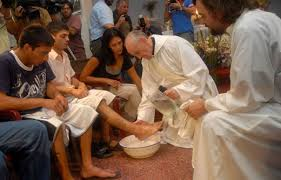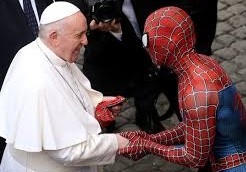
One Person’s Surrender to God
At age 25, Libby Osgood, “wearing heels and a sculpted black skirt with just a hint of pink,” stood in a room at NASA’s Goddard Space Flight Center filled with older males. She was a NASA engineer monitoring the countdown of the launch of a satellite.
Now, over 10 years later, after working for a NASA contractor, several “mission” trips to Kenya, getting her PhD in engineering and teaching engineering at a Canadian university, she is finishing her novitiate and will make her first vows as a sister of the Congregation of Notre Dame.
How can a person who is obviously intelligent, with a fulfilling and promising career, do such a thing? you may ask. Isn’t becoming a nun in today’s climate of opinion the most counter-cultural thing there is?
No Naïve Religious Fanatic
Maybe. But Osgood’s was no snap decision by a naïve religious fanatic. She lacks insight neither into what she’s giving up nor what she’s getting in return.
“Most people,” she wrote in a recent issue of America magazine, “only hear the last 10 seconds of the countdown before a rocket launch. In reality, it lasts for hours and requires multiple days of rehearsal. The few exhilarating minutes are preceded by months of tedious work.
“My journey from being an aerospace engineer to a religious sister followed a similar timeline. There is no 10-second version of my vocation story. It included years of questioning and groundwork, culminating in a few magical minutes of clarity, followed by the actual operations, when a million yeses must be given repeatedly after the initial commitment to religious life.”
Insightful and Courageous
Personally, I’ve always admired nuns and admire even more the women who are insightful and courageous enough to choose that life today. But this isn’t a recruitment piece for the nunnery. Few of us become nuns, monks, priests, ministers or rabbis. This is the story of one person’s patient and persistent search for God, her apparent progress toward that goal, and how the story can help the rest of us.
Shortly after the 2008 launch, Osgood went to work for a NASA subcontractor in Phoenix. “The pace was slower, filled with meetings and cubicles. I began to feel restless, and after two years I decided to go to Kenya with an organization called Mikinduri Children of Hope to help provide medical, dental and vision services in a small village.”
She fell in love with Kenya, seeing in the Kenyan people “what it means to radiate God’s love. This was something I had not seen or felt in Phoenix. Before leaving Kenya, I resolved to quit my job, give up the comfortable and steadily growing salary and take a year off to seek joy.”
She found it in “family time, scrapbooking, yoga and road trips.” She then took a job as an engineering professor and for six years mentored students as they discovered engineering design, while getting her Ph.D.
“I returned to Kenya every February and involved my students in the trips as much as possible so they could develop their skills while helping people who were truly in need,” she writes.
Active in her Church
Meanwhile, she became more active in her church, especially with the youth and young adults. On a field trip with them, she met a religious sister who explained what nuns do. After much reflection, she decided to become one.
“I have always trusted that God has given me both the compass and the tools that I need,” she writes, “and sometimes a hearty shove in the right direction.”
I’ve written often that faith is not just a matter of belief. It’s also about living out the faith – in every way – and it’s interesting that Osgood’s trips to Kenya, where she thought more about others than herself, were crucial in her search for God. Her determination to prayerfully think it through for herself, with no allegiance to the current cultural views that devalue faith, were important.
God has given all of us the compass and the tools we need. Eventually, we need to surrender and use them.




